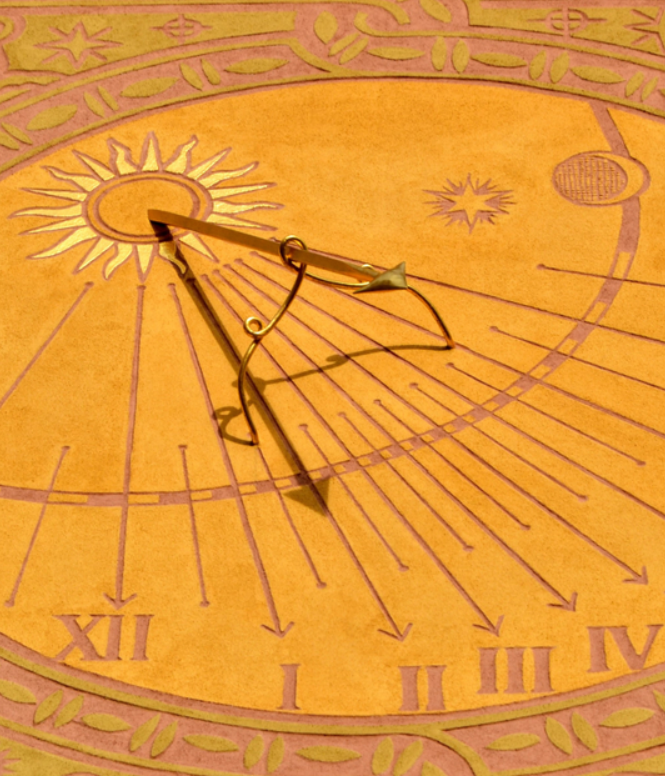- UNITS
- Unit 16 - Measuring Time
- The Game of Words
- Prof. Xue and Luk's Conversation
- An Active Reader
- Asking Questions
- Language Knots
- Test Corner
- LEARNING

♦ This introductory exercise aims to give you a feel for the sound and rhythm of the language, whilst presenting an overview of the maritime topic at hand. ♦ By reading and then listening to the accompanying audio, you’ll discover how words are pronounced and some simple sentence structures. ♦ Once you are comfortable with how the written and spoken words are connected, you’ll be ready to focus on keywords in the next exercise.
Measuring Time
Chip logs and their knots were a shortcut to finding a ship’s speed. You only need to measure a short distance over a short time and you have a good estimation of speed. More complex and accurate calculations around time were more difficult, because accurate time-keeping has been a challenge for most of human history.
Sundials and astrolabes were some of the earliest ways to keep time, they have been used for thousands of years. Sundials use the shadow of a needle to point to the time on a metal clock face. But sundials need good sunshine, and also can be difficult to use on a moving boat. They also only show the ‘local’ or ‘solar’ time, they cannot show a fixed universal time.
Sandglasses were another method of time keeping and were possibly invented in Alexandria around 150 BC. They are blown glass containers, where sand constantly falls from one part to another. The constant flow of this sand measures time. However, the sand flows differently at different humidities, and they also need a human to turn them once every cycle. Therefore, they aren’t an automatic way of keeping time in a reliable way. Sundials were used on ships until the 14th century, then sailors began to use sandglasses, until the 18th century when marine chronometers were developed.
Navigators wanted accurate timekeeping at sea to find out their line of longitude, but traditional clocks with pendulums didn’t work on the rolling ocean. Water clocks could not be used either for the same reason, their mechanisms would not be reliable on a moving ocean. Sailors could tell local time from the Sun’s movements, but they couldn’t keep a fixed global time. And so the Royal Observatory at Greenwich (UK) created the Longitude Prize, which was for a clock, or chronometer, that could keep time accurately at sea.
In 1761, after improving on many different devices, John Harrison built a marine chronometer that was accurate enough to win the Longitude Prize, about $5 million in today’s money. You had to wind up the mechanism on his mechanical clock, and it is the father of many of today’s mechanical watches. Marine chronometers were used up until the late 20th century when electronic watches became cheap, accurate, reliable.
Today, it is easy to know the time anywhere around the world, but really this has only been possible in the last 150 years, or two lifetimes. As with many of our ancestor’s greatest challenges, we no longer even think about the difficulties of timekeeping.
